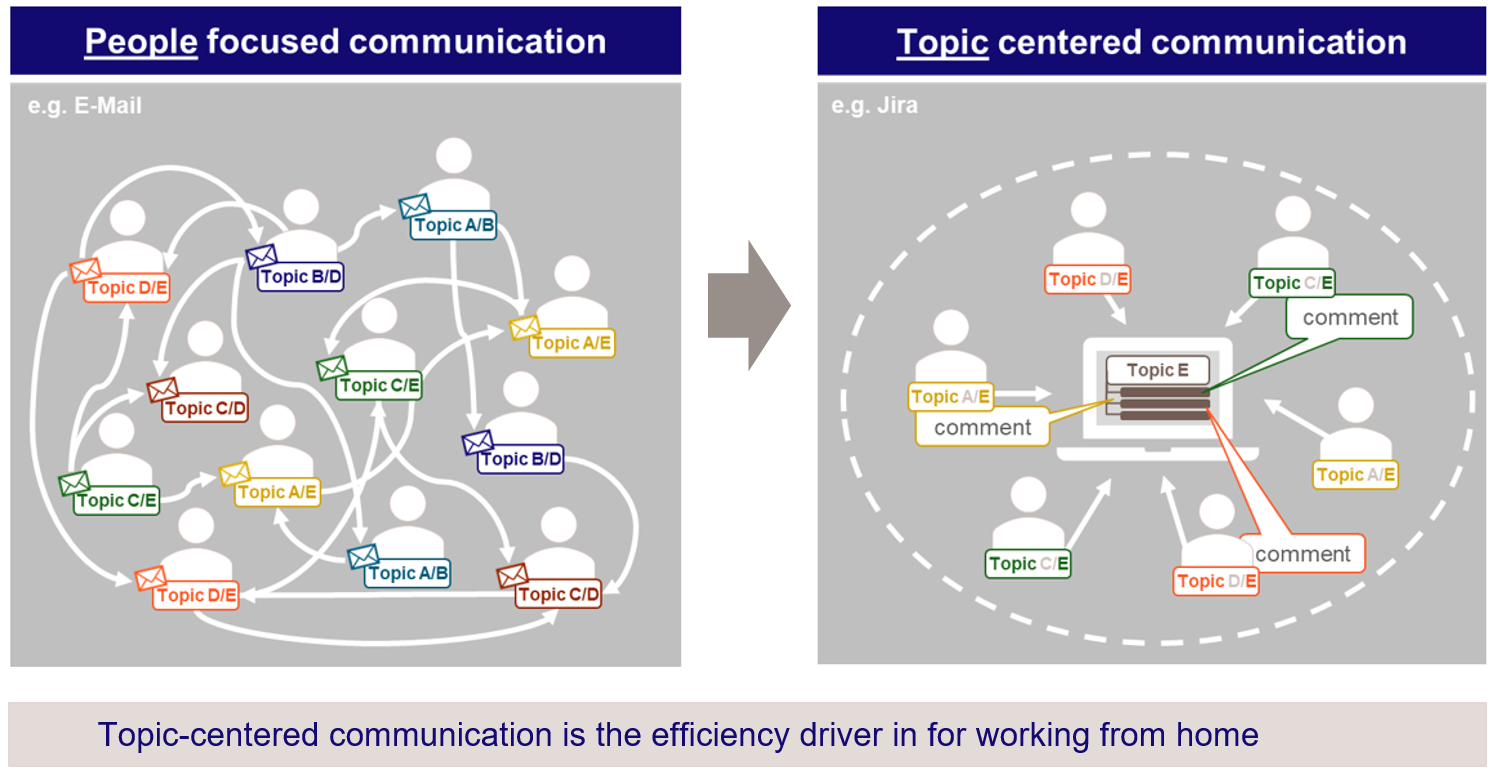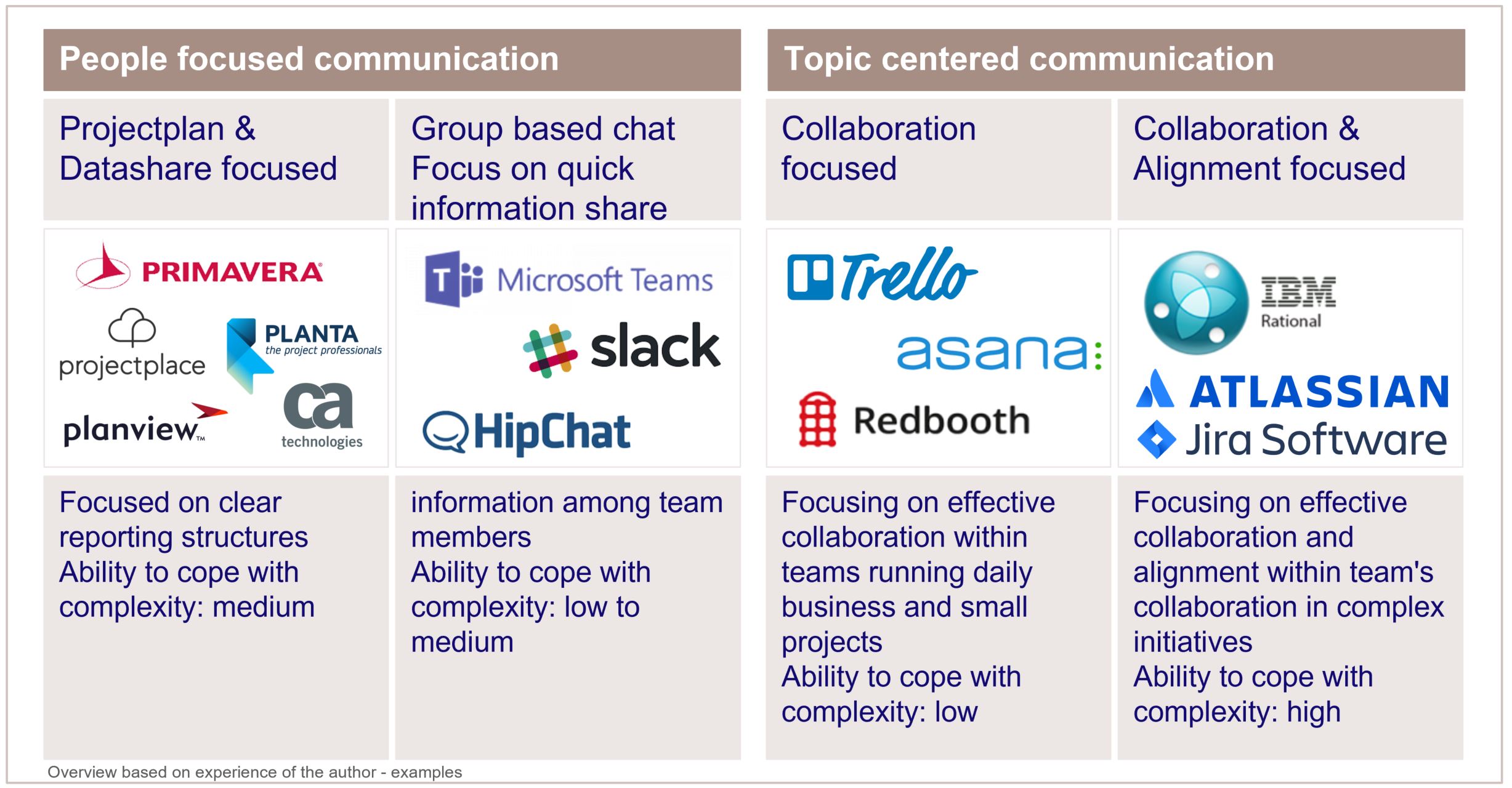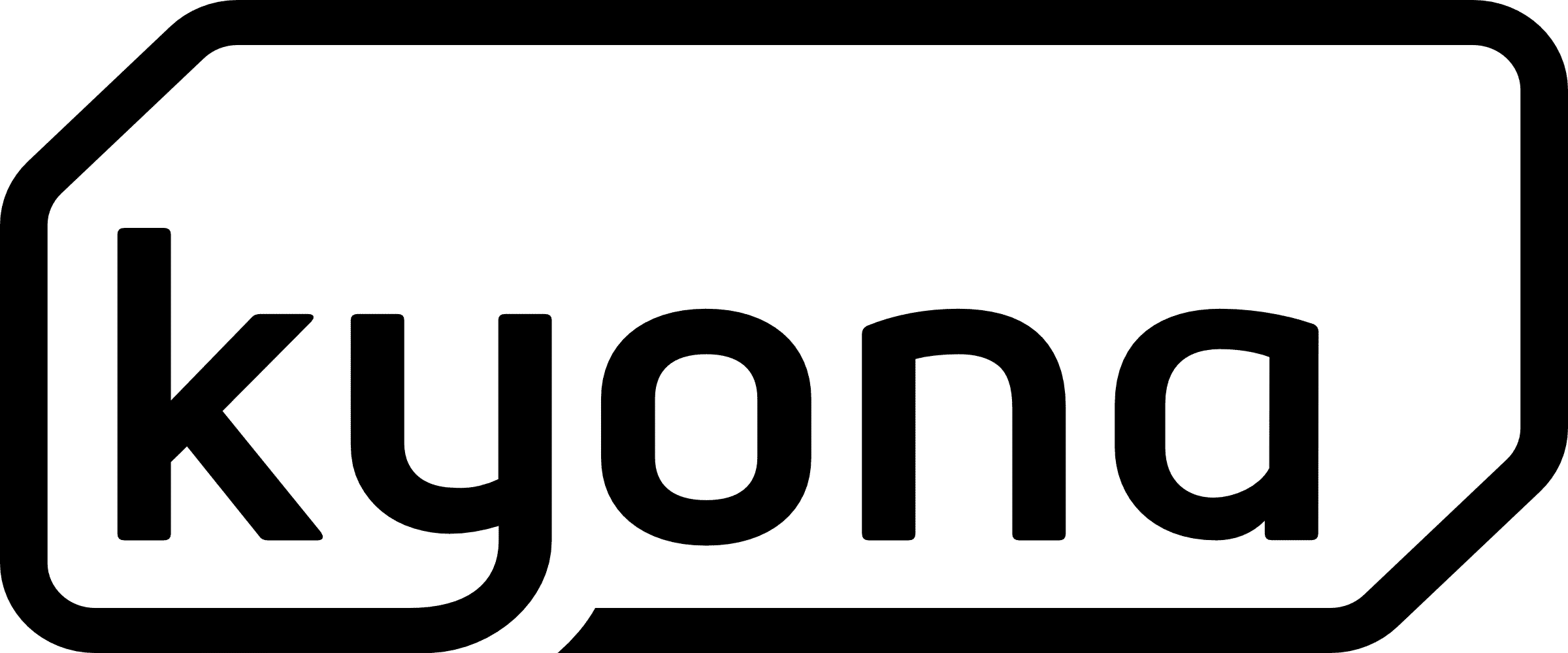Will the trend of working from home continue?
What we can take away from the Corona crisis regarding remote collaboration

According to a recent press release, Facebook chief Mark Zuckerberg believes that the Covid-19 crisis has triggered a long-term shift towards working outside the office. According to his personal assessment, one in two employees of the online network will work from home in the near future. He is not the only company director who has been shown by the consequences of the crisis-related lockdowns, that much more efficiency can be expected from the home office than was originally thought. This surprising discovery continues to offer considerable savings potential in expensive office space in the central locations of expensive congested urban areas.
With the “good experiences regarding home office activities as a consequence of the lockdown”, a globally active company is currently preparing in the Frankfurt area to return its office space to the landlord in order to leave the employees directly in their home office when the occasion arises. In this way, the German organisation is taking a major step towards the savings targets set by the investor-driven group management. Chairs, desks and workstation equipment could be taken away with the employees when they were relocated to their home office a few weeks ago.
How far can this bow be stretched? What works and where are the limits? I find it remarkable that these experiences with decentralized work do not yet include the actual efficiency drivers of remote collaboration.
In most cases, employees were sent home head over heels with a computer and monitor and connected to the corporate network via VPN using their existing private Internet connection. The working environment and the tools used, which are geared towards colocated office work in a building or even a room has not yet been adapted to the new requirements, but it still works better than expected.
Productivity increases not only for software developers, whose results are directly measurable through the way they work together.
How is that going to be for all the home workers when companies understand what makes remote collaboration really efficient and how to make these workplaces outside the office work? Thousands and thousands of digital nomads, on the road in distant countries and always online at work, are already doing it.
We are at the beginning of a change in the quality of collaboration and Corona allows us to look now and understand this change and its potential. It is important to think for a moment now.
So what's the difference?
The most important difference between efficient and inefficient lies in the way we communicate with each other while working together. Digitization and connectivity make the difference. But we need to move away from traditional solutions and develop the collaboration one step further to consider and use the possibilities of the digital platform business.
What will be different? Why is communication so crucial?
Our collaboration is currently designed to meet physically, exchange information, and allow everyone to get a picture from the flood of information that will enable further steps to be taken to solve the tasks.
We write down the spoken words in meeting minutes and in our little notebooks so that we don’t forget anything. We inform people who were not present by mail or now also faster by group chats. Social media makes email even faster…
The principle behind this is to arrange people into groups and to supply these groups with information. We focus on the connection of people so that everyone can experience what seems to be necessary for the work. This principle is ancient and we have only accelerated it with all the communication technology we use. Each person sorts all the information he or she needs.
If we do not have a physical meeting, we miss the ability to constantly update our information collection and stay up to date, we run the risk of being left behind. This is probably one of the reasons why people currently spend an average of two to three hours more in front of the screen at home than in the main office.
The change in paradigm which makes remote working much more effective is right here. We are turning the principle around, Information is assigned to subjects, and subjects are assigned to people.
This may seem like a rather unnoticeable difference at first glance, but it is of fundamental importance for the architecture and thus the efficiency of the collaboration! All work is written on cards. One card for each task. All communication now focuses on these tasks. Every contribution, every relevant information on the topic, or the card map is digitally combined into a thread. This automatically creates a solution path to which all participants provide their respective input.

The efficiency gain lies in the sorting of relevant and important information on topics together instead of having each individual person sort everything for himself.
Around this principle, structures of collaboration are now being built, which we already know from the agile methods. Organisation in small teams, regular alignment to the cards that are currently being worked on. Doing instead of picking and complaining. Always write everything into the cards and thus work together on solutions instead of writing emails and later searching for information in them.
In this way, knowledge is interconnected instead of people and everyone benefits from this collaboration.
If we use digital platforms such as IBM Rational or Atlassian Jira as the core of communication instead of e-mail, group chat and SharePoint, and use real video conferencing systems such as Goto Meeting or Zoom, which will allow people to see each other even when the screen is split and to see the gestures and facial expressions on their faces that are so important for mutual understanding, instead of using MS Teams or Skype to make calls with desktop sharing only. The difference will soon become clear.
Everyone has all the information they need to complete their tasks in cards that are clearly displayed on boards. Everything is accessible, everything is developed, edited, and sorted together.

The realisation that communication should be topic-related rather than person-related will be the driver for efficiency in collaboration and make it completely independent of location. Then everyone will work ( except in physical production) where they want to and still as if they are all together.
When you think about the future of collaboration, it becomes clear that neither Microsoft nor Slack currently offers the right architectures for efficient collaboration and certainly not for knowledge workers who are relegated to the home office.
The future is remote, I have no doubt. It is agile and digitalized, connecting knowledge instead of people.
About the author:
Rainer Borg
After 10 years of consulting and development work in a large auditing and management consultancy and as the CEO of a start-up, Rainer Borg dedicated himself entirely to the topic of Scaled Agile Collaboration in organisational and product development.
With profound competence in Scaled Agile Enterprise architectures, he dimensioned agility from the individual team to the entire group of companies.
His passion is to accompany companies in their change, to initiate structures that enable the management to manage the complexity of change initiatives, and to master and control it. On the other hand, to enable employees to get involved and actively shape the company.
Photo credits:
Photo by Jakob Owens uX7UOpU-884 on unsplash.com
- May 31, 2020
- sirewp
- kyona GmbH



